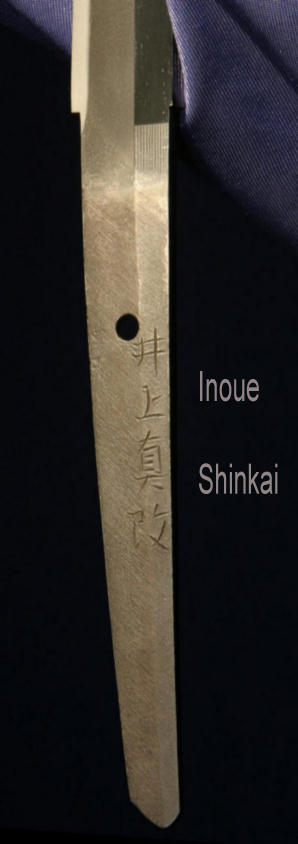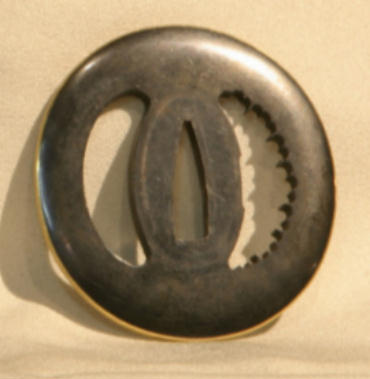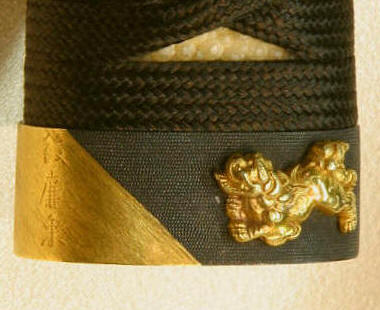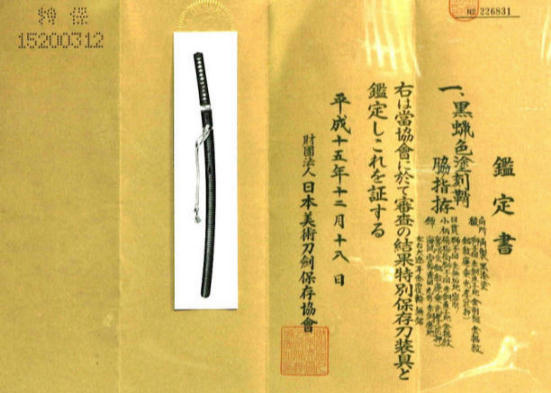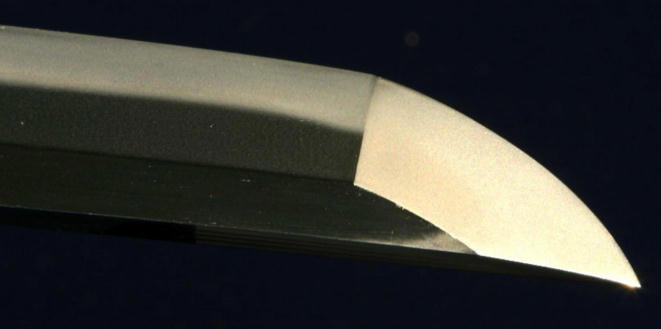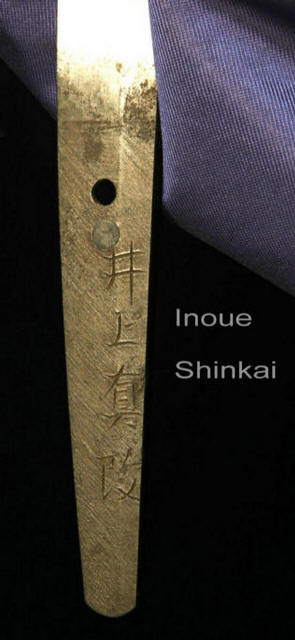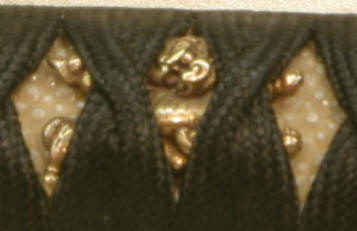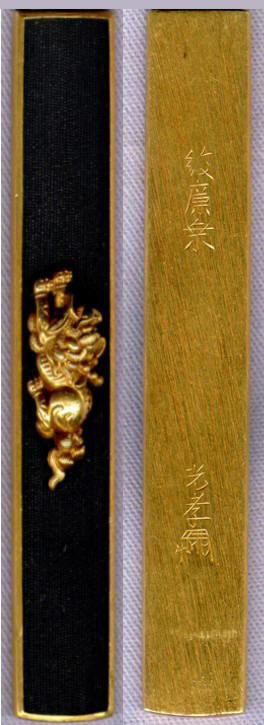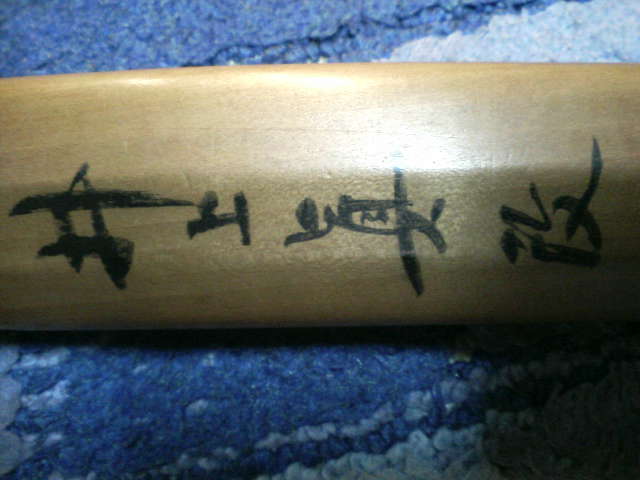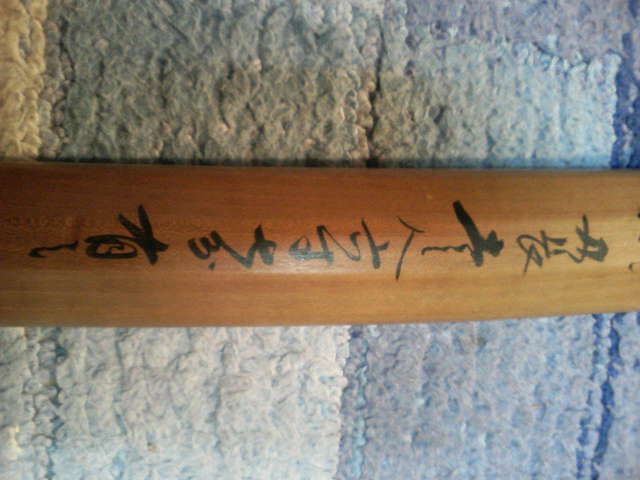Gallery Page (Display Only)
Inoue Shinkai Daisho
“The Masamune of Osaka”
Blade and Koshirae: Certified Tokubetsu Hozon by the N.B.T.H.K.
Book Illustrated in Shinto Taikan by Iimura
The dai (large) blade is illustrated in Shinto Taikan. Shinto Taikan by Iimura Kasho is one of the most important books and is a must for the advanced / serious collector. Out of all the Shinkai blades available in Japan, this sword was selected as being the finest example… to Iimura sama who had access to the majority of Shinkai blades in Japan. It is an exceptional and rare honor to be bestowed on this sword.
These are an exceptionally rare set of fittings that are authentic and certified Tokubetsu Hozon by N.B.T.H.K. They were made by Goto Renjo, who was one of the first and foremost Goto masters during the mid 1600s. He became the 10th gen. mainline Goto master in 1652; he was the last connection between the original Kyoto mainline school and the later Edo school which did not keep to the classic style of the family art. Renjo lived in Kyoto for the last 25 years of his life where he died in 1708. Certified fittings of this age in this condition are seldom if ever seen for sale. It is truly one of the rarest daisho that any one has offered.
Shinto Taikan
Translation:
Shint? Taikan, p. 363
Katana, mei: Inoue Shinkai (????)
(Kiku-mon) Enp? hachinen nigatsu hi (???????????)
“(Chrysanthemum crest) on a day of the second month Enp? eight (1680)”
Nagasa 70.9 cm, sori 1.5 cm, motohaba 3.3 cm, kasane 0.75 cm, shinogi-zukuri, iori-mune, slightly
elongated ch?-kissaki, ubu-nakago with kesh? and sujikai-yasurime, maru-mune, iriyamagata-jiri, and
one mekugi-ana. The jigane is a dense and excellently forged ko-itame with ji-nie, which give it a
“moist” (uruoi) appearance. The hamon is a nie-laden ?-gunome-midare that starts with a suguyakidashi and that is mixed with uchinoke and thick ashi. The b?shi is sugu with a ko-maru-kaeri and hakikake. The blade is a work produced close to the smith’s late years.
Sho (Small) Blade
daish? (??) – Lit. “large and small” or “long and short.” Abbreviation of combination of dait? (??, long sword) and sh?t? (??, short sword). The term daish? refers to the well-known sword pair worn by members of the samurai when on duty. The daish? appears for the first time towards the end of the Muromachi period. The Shinch? K?ki (????), the chronicle on Oda Nobunaga´s life for example, mentions: “It became common to wear a daish? on the hip.” And the T?dai Ki (???) from the early Edo period which adapts and quotes protocols like the Shinch? K?ki mentions in an entry for the fourth year of Tensh? (??, 1576) a kinsaku no katana daish? (??????), i.e. a “daish? mounted with gold fittings.” But contemporary, also terms like ry?-goshi (??) or moro-koshi (??) were in use to describe a sword pair. They can be translated as “the two on the hip.” However, a ry?-goshi also describes a combination of an identically mounted wakizashi and tachi.
daish?-koshirae (???) – Mountings of a daish?. The term daish? is rather neutral and does not mean per se that the two swords are identically mounted. However, from the Edo period onwards, the term became synonymous for an identically mounted sword pair as we can clearly see the trend away from a tachi worn “with any kind of” uchigatana or koshigatana as sashizoe side sword towards an en suite mounted pair of swords. Unlike the regulated banzashi-daish?, there were hardly any limits for the to the taste of its wearer and so the daish?-koshirae and its fittings like tsuba, kozuka, k?gai and the like said much about the status, wealth and taste of the latter. So they ranged from the splendidly mounted swords of the ancestors mounted with gold or gilded fittings to a black lacquered saya in combination with an iron tsuba in the plain tea taste.
These definitions are from pages 42-44 of Markus Sesko’s ENCYCLOPEDIA OF JAPANESE SWORDS . You can view all of his 70+ publications on LuLu.com
Kozuka mei- Goto Mitsuyoshi
Sayagaki(written appraisal on shirasaya)
This Sword is not available for purchase.
If you wish to purchase a Japanese Sword please view our Nihonto for sale page or contact us directly via email or contact us at 1(608) 315-0083 any time, please include specifics of what you seek, i.e.: Katana, maker, era, price range etc.
Pictures and content may not be copied without the express permission of samuraisword.com ©









